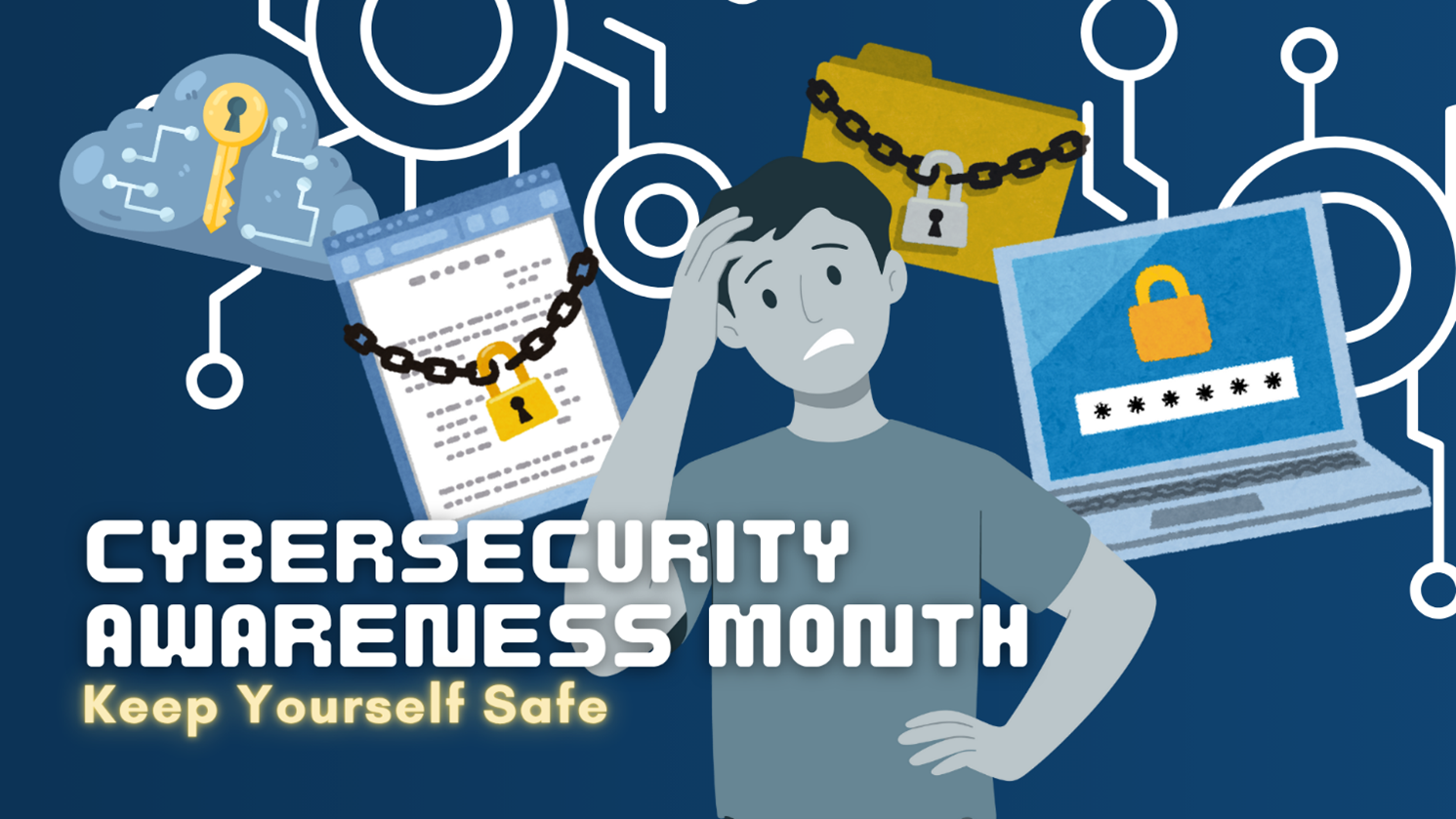- Office of Consumer Affairs and Business Regulation

In today’s world where everything is digital, cybersecurity is more important than ever. With cybercriminals finding new ways to trick users into accessing their personal information, we should always be aware and learn about the different ways that we can stay protected from these cyber threats.
What are the most common cyberattacks?
Criminals can send emails that appear to be from legitimate addresses, tricking users into opening and trusting the sender. Some common cyberattacks include:
- Malware: Clicking on suspicious links can install software that hacks into the device, stealing personal information.
- Spoofing: Disguising themselves as a trusted source or person through alteration of Caller IDs and email addresses to steal personal information.
- Password access: Hackers will circulate through a list of common passwords to try to get into your account. This trial-and-error approach allows criminals to gain access, so having a strong password is important.
How can I keep myself safe?
The key to improving your online safety is to be aware of everything you see online. Here are some safe online practices from the Cybersecurity and Infrastructure Security Agency (CISA) to help keep accounts and personal data safe:
- Update software: To protect yourself from the latest threats, check your device for notifications on new updates. Or better yet, set your phone or computer to auto-update.
- Strong passwords: Using long, unique passwords full of numbers, letters, and symbols decreases the chances of hackers guessing your password. Storing your passwords in a password manager can help you organize and make logging in easier.
- Turn on multifactor authentication (MFA): Requiring a second step to verify your identity provides an extra layer of security for your accounts. Security keys, authenticator apps, biometrics, or text codes are some examples of MFA methods.
- Report phishing: If you get sent a suspicious email, alert the person being impersonated and report the email for phishing. Email services have a way to easily report scam emails. For example, Microsoft Outlook has a button with an envelope and fishing hook graphic that you can click to report a fraudulent email.
Cybercriminals don’t always use advanced hacking tools to get access to your personal information. By gaining the trust of victims through deception or creating a false sense of emotional connection, they can gain access easily and take control of your personal life.
How can I help others?
Stay informed and learn about the latest scams to educate others on cybersecurity. Cybercriminals tend to target children and older adults as they are not as tech savvy, so implementing online security measures such as parental controls on certain devices can help prevent hacking.
If you think you’ve been a victim of a cyberattack, learn next steps and how to report a cybercrime here: Report a cybersecurity incident | Mass.gov.

